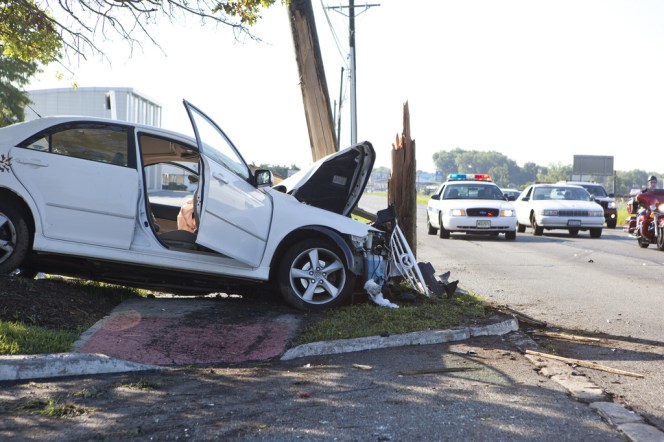Fifty more people dead in Michigan. Sixty one in Virginia. One hundred and six in Arizona.
Those are the goals those state's departments of transportation have set for themselves for road deaths under a new federal program challenging them to improve.
Even some of the most progressive states are calling for more people dead under new "targets" for certain performance measures they must report to the federal government. The goal-setting exercise is supposed to help make these huge bureaucracies that receive billions in federal funds every year slightly more accountable.
But the first round of goal-setting makes it clear states aren't willing to make the substantive, structural changes to really improve safety. All of the states seem to be treating it more like a modeling exercise than any sort of call to action.
California
Take California, which has some of the most progressive transportation policies (as they relate to the environment anyway).
California's goals call for 3,445 traffic deaths a year as the five-year average from 2014 through 2019. That's 412 additional fatalities every year than the state averaged between 2011 and 2015.
True, California is adding people every year. Even so, this is an aspirational exercise in agenda setting with no penalties whatsoever for falling short.
California even — inexplicably — sets a goal for a higher fatality rate per miles driven.
The U.S. Department of Transportation notes in its description of the program that it "does not prescribe a methodology for states to set their annual safety performance targets. States have the flexibility to use the methodology they deem most appropriate."
But it does say the targets should be "data-driven, realistic, and attainable."
Ohio
Ohio has added a few hundred thousand people over the last two decades, but does actually call for a reduction in fatalities. But it's miniscule.
The state's target calls for 20 fewer deaths per year — about a 2-percent decrease from the rolling annual average between 2013 and 2017 versus the rolling period of 2015-2019.
Colorado
In Colorado, the "goal," meanwhile, is a 16-percent increase in traffic fatalities, rising from 554 to 644 for the five year period ending in 2019.
Like California, Colorado isn't even aiming to reduce fatalities when controlling for population growth and increase in driving miles. The state "targets" a 10-percent increase in its fatalities per 100 million miles driven.
At the same time the state acknowledges it has an "aspirational goal of moving Colorado towards zero deaths" in the "long term." But it doesn't seem to be at all willing to make the major changes needed to bring that about.
In its statement about the numbers, Colorado DOT blames it all on the models.
"Contributing factors were considered, including the following: population growth, increases in [vehicle miles traveled], economic growth, potential funding changes, and legislative changes," the agency writes. "All of the models indicated future increases in fatality rates, resulting in short-term targets with an increase in the fatal rate."
I reached out to Colorado DOT for more information.
"While we are doing the very best we can with the resources we have to improve safety, all of the factors that influence numbers of crashes are indicating increasing trends," the agency responded. Specifically, CDOT wrote, population is increasing, driving miles are increasing, drunk driving is increasing [editor's note: the Mile High State has legal pot], distracted driving is increasing and the agency isn't anticipating any infusion of money for safety programs nor major legislative safety advances.
But Colorado DOT controls a $1.4 billion annual budget. Some of the funding is restricted. But the agency could direct additional funding to safety programs if it wanted.
Policy leaders at Transportation for America say the state's lack is showing a disappointing lack of ambition in keeping its own residents alive and healthy — even more so since there is no penalty for states that fall short of their goals. They would simply have to report that.
Transportation for America noted in a recent report that 10 of the 20 states with the worst pedestrian safety records were predicting more pedestrian deaths in the future.
"The only 'acceptable' number of deaths on our roadways is zero, but every single state — whether seeking to marginally reduce pedestrian deaths and injuries or allow the to continue to rise unabated — established a target for 'success' that allows these preventable deaths to continue or even increase," the organization wrote.
"We can and must raise the bar," the organization said.






